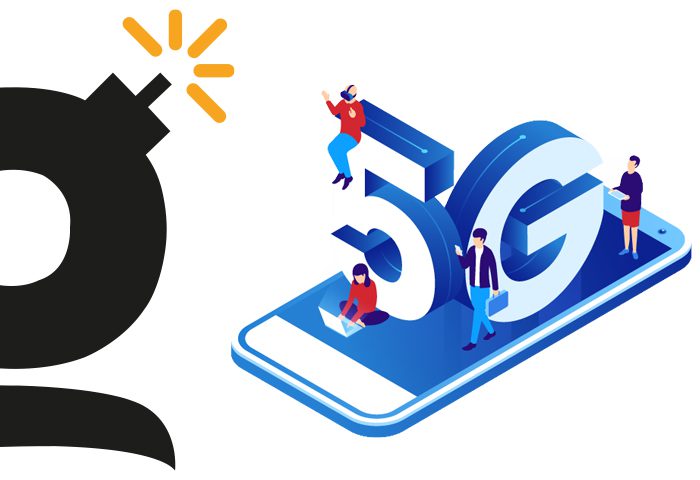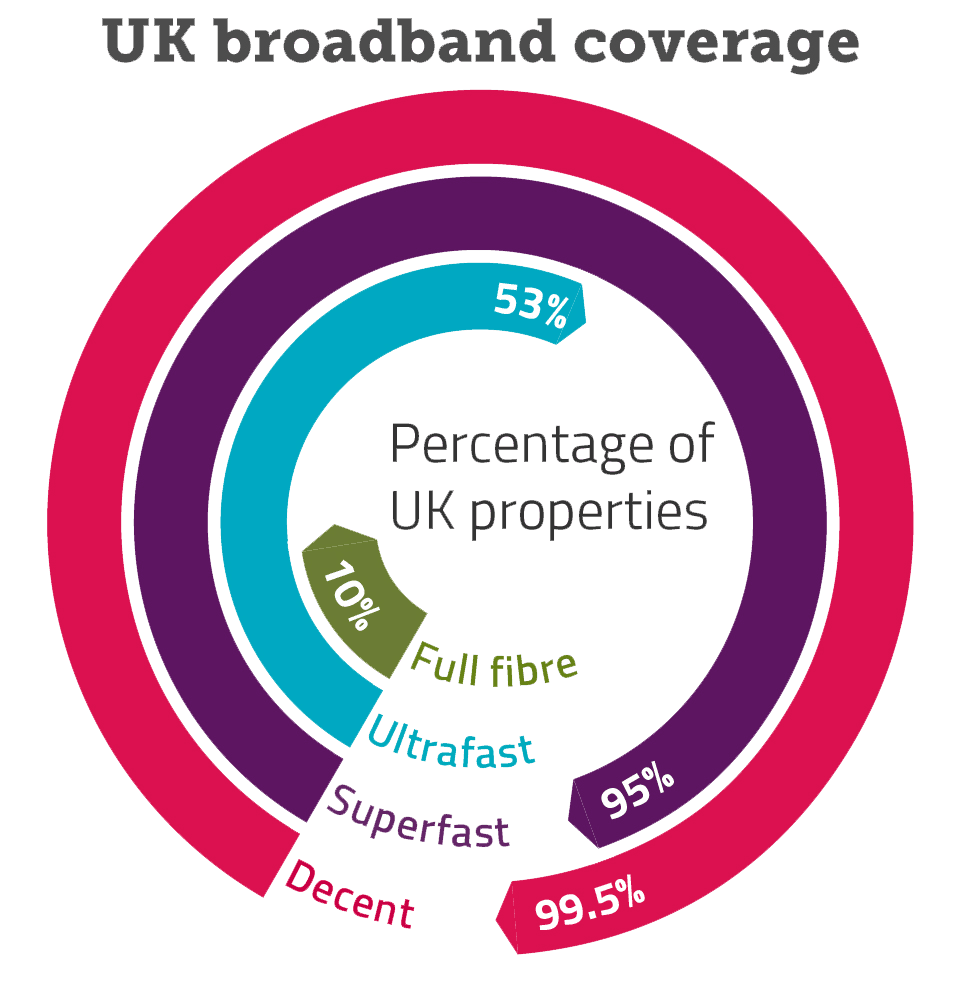
You would be forgiven thinking 5G (gigabits per second targeted download speeds) is mainstream already. It is here- but it is not mainstream. Most of us do not have devices that are 5G enabled even if it were. The Iphone 12 has only just come out that is 5G enabled, and at £850, not many people have one in their pocket. There are 20 or so others like Samsung and Huawei but all very new and expensive.
The main cities do have 5G coverage – 112 cities in UK so far, but the intent is by 2022 that majority of areas will be able to use 5G wireless. We will therefore see more autonomous products that can benefit from this faster processing capability. The bigger news is the move from copper to fibre broadband in wider areas of the country. 5G is great if you are travelling in and around cities, but in the home, devices need to talk to a router that for most of us run on copper back to the exchange.

Developers will be able to learn in 2021 what the 5G user experience is like and how if their behaviour changes in line with their expectation.
I for example have a 4g antenna on my house; on a good day I can get a 15mb download speed. A chap I play tennis with can choose between 80mb and 100mb download speed and he lives 5 miles away from me. Our approach to how we use apps and our digital devices is now different. Apps that require too much data to operate efficiently I struggle to use, apps that don’t, he finds the UI/UX too dull and old.
“From March next year, homes and businesses still unable to get a decent broadband service will be legally entitled to request one under the Universal Service Obligation, which Ofcom is implementing on behalf of the Government.” (Offcom.org.uk)
Products developed in 2021 for release in 2022 create a real challenge for the developers, UI/UX needs to be as intuitive and as enjoyable an experience as possible. Yet not leave swathes of customers behind-especially if developing home networked products.

You would be forgiven thinking 5G (gigabits per second targeted download speeds) is mainstream already. It is here- but it is not mainstream. Most of us do not have devices that are 5G enabled even if it were. The Iphone 12 has only just come out that is 5G enabled, and at £850, not many people have one in their pocket. There are 20 or so others like Samsung and Huawei but all very new and expensive.
The main cities do have 5G coverage – 112 cities in UK so far, but the intent is by 2022 that majority of areas will be able to use 5G wireless. We will therefore see more autonomous products that can benefit from this faster processing capability. The bigger news is the move from copper to fibre broadband in wider areas of the country. 5G is great if you are travelling in and around cities, but in the home, devices need to talk to a router that for most of us run on copper back to the exchange.

Developers will be able to learn in 2021 what the 5G user experience is like and how if their behaviour changes in line with their expectation.
I for example have a 4g antenna on my house; on a good day I can get a 15mb download speed. A chap I play tennis with can choose between 80mb and 100mb download speed and he lives 5 miles away from me. Our approach to how we use apps and our digital devices is now different. Apps that require too much data to operate efficiently I struggle to use, apps that don’t, he finds the UI/UX too dull and old.
“From March next year, homes and businesses still unable to get a decent broadband service will be legally entitled to request one under the Universal Service Obligation, which Ofcom is implementing on behalf of the Government.” (Offcom.org.uk)
Products developed in 2021 for release in 2022 create a real challenge for the developers, UI/UX needs to be as intuitive and as enjoyable an experience as possible. Yet not leave swathes of customers behind-especially if developing home networked products.

You would be forgiven thinking 5G (gigabits per second targeted download speeds) is mainstream already. It is here- but it is not mainstream. Most of us do not have devices that are 5G enabled even if it were. The Iphone 12 has only just come out that is 5G enabled, and at £850, not many people have one in their pocket. There are 20 or so others like Samsung and Huawei but all very new and expensive.
The main cities do have 5G coverage – 112 cities in UK so far, but the intent is by 2022 that majority of areas will be able to use 5G wireless. We will therefore see more autonomous products that can benefit from this faster processing capability. The bigger news is the move from copper to fibre broadband in wider areas of the country. 5G is great if you are travelling in and around cities, but in the home, devices need to talk to a router that for most of us run on copper back to the exchange.

Developers will be able to learn in 2021 what the 5G user experience is like and how if their behaviour changes in line with their expectation.
I for example have a 4g antenna on my house; on a good day I can get a 15mb download speed. A chap I play tennis with can choose between 80mb and 100mb download speed and he lives 5 miles away from me. Our approach to how we use apps and our digital devices is now different. Apps that require too much data to operate efficiently I struggle to use, apps that don’t, he finds the UI/UX too dull and old.
“From March next year, homes and businesses still unable to get a decent broadband service will be legally entitled to request one under the Universal Service Obligation, which Ofcom is implementing on behalf of the Government.” (Offcom.org.uk)
Products developed in 2021 for release in 2022 create a real challenge for the developers, UI/UX needs to be as intuitive and as enjoyable an experience as possible. Yet not leave swathes of customers behind-especially if developing home networked products.

